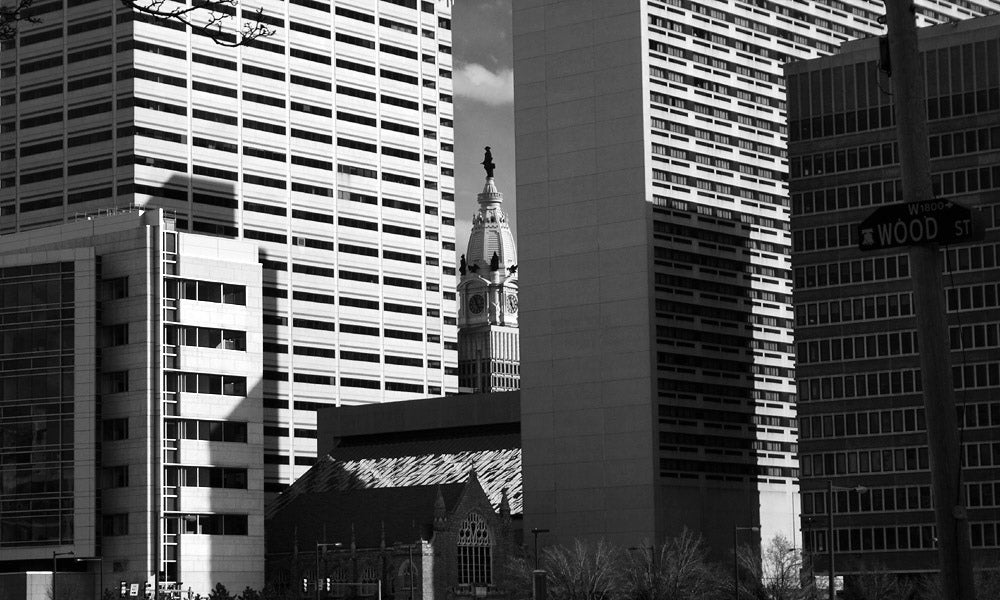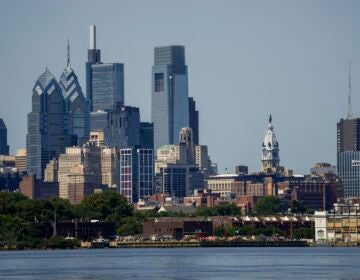Meet the broken system costing your neighborhood its voice

“Philadelphia cannot afford to hang on to a process that favors discretion and subjectivity over objectivity, clarity and predictability.” That’s how a 2004 Building Industry Association report criticized the city’s Zoning Board of Adjustment, as it made the case for overhauling the city’s 50-year-old zoning code and modernizing city plans.
As Jake Blumgart recently reported, a draft report recently released by the Philadelphia City Planning Commission echoed that old critique. Five years after the city’s updated zoning code went into effect, the Zoning Board of Adjustment (ZBA) remains stubbornly impervious to change. It still approves a stunning 90 percent of cases it hears, virtually guaranteeing success for any appeal.
The new report has as sharp a critique as a city agency can muster:
“The rate at which variances are approved in Philadelphia reflects a particular and significant disconnect between planning law, policies, and enforcement.
“This leads to far less predictability and quality of, and an unequal distribution of standards for, development in the city. The decisions of the ZBA often dissuade community engagement in planning processes, as members of the public conclude that variances will be approved regardless of their input. Especially with the still-recent adoption of an updated zoning code and a comprehensive rezoning effort underway in the city, it is time for the rate of approvals for zoning variances to fall, such that decisions are rooted in the finding of true legal hardship.”
Armed with a new code, increasingly updated zoning across the city, and new district plans, it’s time for a new day at the ZBA too. It should find the nerve to say no more often. By taking even small steps toward the legal standard of hardship required for relief, the ZBA would dissuade developers who might otherwise be tempted to treat it like a permit vending machine. With fewer cases, the ZBA might eventually have greater capacity to more deliberately review the cases it actually does consider.
The Zoning Board of Adjustment was established in the 1930s to hear zoning permit appeals. It is a necessary escape valve that gives property owners relief when zoning creates a hardship. Before the rewrite, Philadelphia’s zoning code was a bloated blueprint for a city that no longer existed. Because it was so out of step, projects increasingly needed variances, and that gave the ZBA substantial power over development in Philadelphia. The more outdated the city’s zoning code became, the more powerful the board became. By the early 2000s, the ZBA reviewed 35 percent of permit applications. It had earned the reputation for being capricious and politically motivated, particularly since it’s comprised of five mayoral appointees, often well-connected individuals who don’t always know much about zoning.
The ambitious zoning code rewrite, a nearly five-year long public process, aimed for a simplified code that fit the city better. Its promise was for more predictable and fair development processes, with far fewer cases that needed relief from the ZBA. (Compared to its peer cities, Philadelphia’s ZBA sees hundreds more cases a year.)
As of August 2017, the planning commission reports that 45 percent of the proposed rezonings are complete, helping apply the new code to neighborhoods citywide and better match conditions on the ground. Theoretically that should mean fewer variances and a lighter ZBA caseload. While the number of zoning permit applications has gone up since 2012, the volume of applications appealed to ZBA has decreased, though not very dramatically, and use variances make up the majority of appeals.
Planner Mason Austin offered two reasons for the ZBA’s still-large caseload at January’s planning commission meeting. One is that the code needs refinement to reduce certain types of common variance requests that result from factors like small lots in older parts of the city. Another significant reason Austin offered is the ZBA itself. Because the ZBA still approves 90 percent of appeals, he said, there’s no real incentive to design projects to fit the code. Developers and land use attorneys remain entirely willing to take those odds.
Several neighborhood zoning committee members I spoke with suggested that even though there are still plenty of appeals, there has been a shift. Some neighborhoods say they’re seeing less substantive appeals than those under the old code and before remapping. Sure, there are still variance requests, but a higher proportion ask for minor relief. Some also have found that the ZBA routinely votes to approve projects that neighbors do not support, often evaluating variance requests in isolation and without particular regard to broader context or plans.
In my own neighborhood of Bella Vista, remapped in 2015, the zoning committee has tracked its votes against the ZBA’s record. From mid 2014 through 2017, there were 17 times when Bella Vista’s zoning committee said it submitted a letter of opposition to a variance request. Of these, it found the ZBA granted 13 and denied four. (In the same period there were 34 cases the neighborhood did not oppose, and the ZBA granted all of those appeals.) That’s in line with Fishtown’s recent experience as well. That’s discouraging for community involvement as neighborhoods change.
While the ZBA is hearing an average of 265 fewer cases annually, the ZBA’s caseload and its rate of approval are both still too high.
There are still roughly 1,000 zoning appeals annually. On January 17, the ZBA had hearings for 55 properties on its agenda. The week of January 22nd there were more than 60 scheduled. For comparison, New York City’s Board of Standards and Appeals had half that number slated for public hearing on January 23.
The ZBA remains a very part-time board, with members paid a $100 stipend per meeting, which can be brutal all-day slogs. With so many cases, board members don’t have the capacity to carefully examine each case – reading letters from neighbors, exploring a project’s context, or reviewing plans – with any sort of depth.
The ZBA needs some flexibility and independence in its judgment, but we also need it to be a stricter arbiter of development decisions. A new code and district plans should guide the ZBA’s thinking, but these alone can’t encourage it to make smarter decisions. With more rezonings citywide, variance requests should keep creeping downward. But remapping is no silver bullet. It also comes down to the board itself.
The ZBA should evolve to become tougher, granting relief when there’s a true hardship, and its members need more training opportunities. To that end, it’s time for Mayor Jim Kenney to begin weeding out the purely political appointments from the ZBA in favor of appointees who know the code best and are more prone to think critically about how it is applied. Best of all, backbone is free.
WHYY is your source for fact-based, in-depth journalism and information. As a nonprofit organization, we rely on financial support from readers like you. Please give today.







